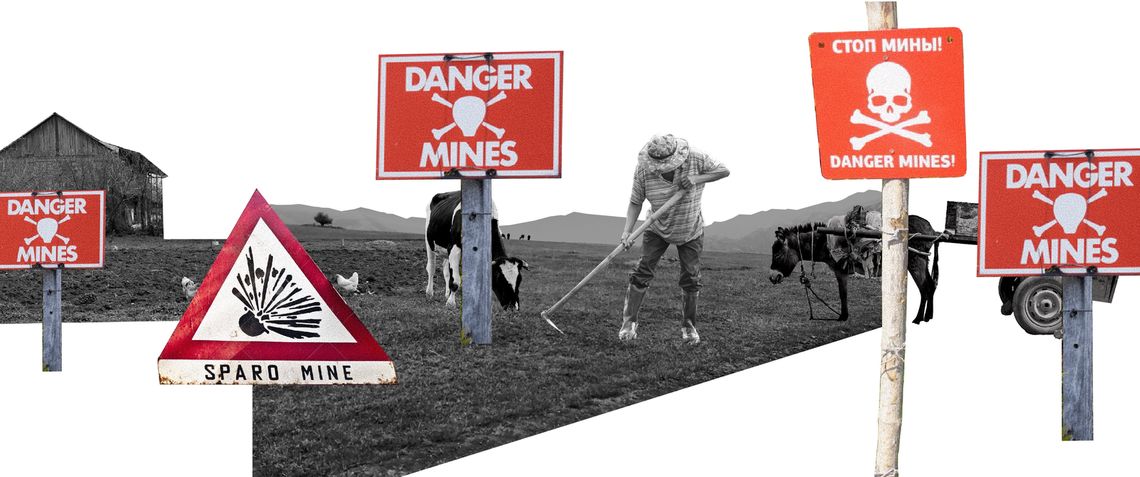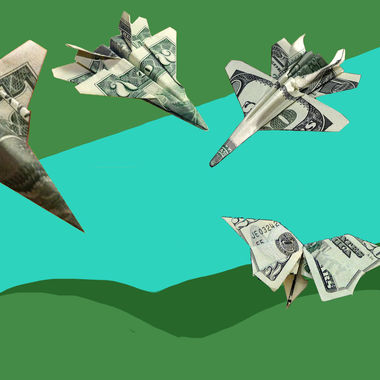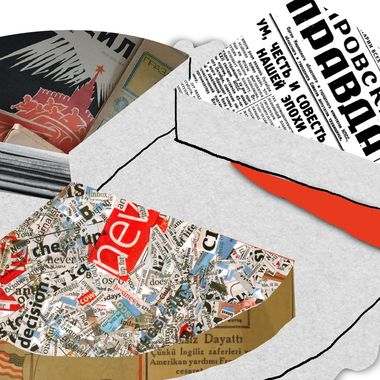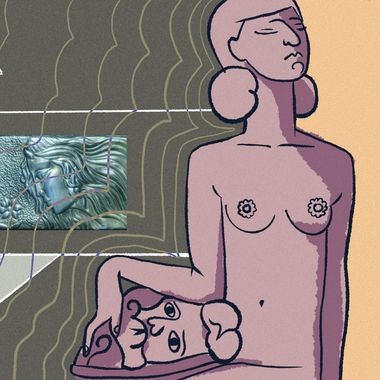
Illustration by Armine Shahbazyan.
Following the First Karabakh War, which lasted from 1988 until 1994, the issue of landmines and explosive remnants of war (ERW) became a major hazard and concern for civilians residing in Armenia’s border communities. Based on on-site research, conducted between 2012 and 2013, four regions of Armenia (Vayots Dzor, Tavush, Syunik and Gegharkunik) were identified as contaminated and thus hazardous. It is estimated that 17.6 square kilometers in these four regions is still covered with explosive remnants of war, impacting over 35,000 residents.
The Center for Humanitarian Demining and Expertise (CHDE) was established in 2011 by Government decree. In 2014, it became Armenia’s national mine action center and is the primary state body responsible for identifying contaminated areas, demining and oversight activities within the territory of Armenia.
“Our main goal is to ensure a safer life for residents living in affected communities and enable them to engage in agricultural activities and cattle breeding,” noted Karine Hakhnazaryan, Public Relations Officer at CHDE. The center maps and marks areas covered with landmines in order to install visible danger warning signs before they are cleared. Since its establishment, however, the center has only managed to clear 0.33 square kilometers covered with landmines and unexploded ordnance (UXO) including rockets, artillery shells, mortars and grenades. Hakhnazaryan shared that, in 2020, the center’s experts cleared an area covering 62,896 square meters in Kotayk region that was once used as a military depot and 3,850 square meters out of the 550,000 square meters in the Syunik region’s Korni gorge, which is covered with cluster munitions. Following the skirmishes in southeastern Tavush region in July 2020, the center’s staff worked there as well to destroy cluster munitions, the use of which against civilian populations is banned by the Geneva Conventions. During the 2020 Artsakh War, the center’s experts were in Syunik and Gegharkunik regions, where they have managed to detect and neutralize some of the unexploded ordnance.
It is important to note that the scope of contaminated areas still does not include the areas that became covered with unexploded ordnance following the 44-day war, which means that the 17.6 square kilometers that is currently believed to be contaminated can be expected to increase. Hakhnazaryan said that the mapping and marking of newly-contaminated areas is currently underway. She went on to say that, back in December 2020, the center’s staff was in the Syunik region, where they managed to perform a non-technical survey in the area covering over 30,000 square meters. Clearing landmines involves multiple complex stages; a non-technical survey is the initial step for identifying where explosive remnants of war can or cannot be found, as well as where further investigation and clearance need to take place. It is then followed by a technical survey, during which properly-equipped personnel enter suspected areas to confirm the presence of mines, their type and the extent of the area contaminated. At the end of this stage, the contaminated areas are mapped and marked with warning signs and necessary fencing. After these two stages are successfully completed, sappers can start the actual demining of the area. Under favorable weather conditions, one sapper can demine 15 to 20 square meters per day.
Hakhnazaryan explained that weather conditions are now favorable for demining and the center’s specialists are in the town of Davit Bek in the Syunik region, where they started detecting and destroying UXOs. “But again, more time will be required until we have a clear picture of how much area was contaminated during the [2020] Artsakh War,” she added. It is important to note that Davit Bek was among the communities that had been cleared of all landmines and explosive remnants of war as of 2019, but that, following the 2020 Artsakh War, cluster munitions were detected in the area. According to Hakhnzaryan, the center receives 130 million AMD ($250,000) in annual financing to conduct demining. This figure is in addition to the financing that the center receives for its operational costs.
The issue of landmines and explosive remnants of war is a major concern in Artsakh as well. According to HALO Trust, an international humanitarian mine clearance NGO working in Artsakh since the early 2000s, there have been more landmine accidents per capita in Artsakh than anywhere else in the world. Thus far, HALO Trust cleared approximately 500 minefields in Artsakh, ensuring the safety of over 130,000 civilians. Besides clearing landmines and explosives, the NGO also has awareness initiatives to educate the public on how to stay safe until all the landmines are gone. After the 2020 Artsakh War, in addition to HALO, Russian peacekeepers and emergency services crews are also involved in clearing landmines and unexploded ordnance. HALO Trust used to perform demining within the territory of the Republic of Armenia, but it ceased those operations in 2015.
Speaking about having a sufficient number of specialists, Hakhnazaryan explained that CHDE operates a training center to prepare new staff. The number of sappers involved in a demining mission largely depends on the scope of activities that need to be carried out. “Specialists from the Defense Ministry, Ministry of Emergency Situations and Armenian Red Cross Society who are involved in any stage of the demining process, including first aid providers, sappers and psychologists, get trained at the center,” she added. Since the variety of used munitions expands with every subsequent escalation of the armed conflict, the teaching materials are also updated accordingly. For instance, following the 2020 Artsakh War, the Foundation for Demining and Demolition organized training in collaboration with UNICEF, during which the teaching materials were modified to include information about the new types of ordnance that were used during the war.
CHDE works closely with the government bodies that are involved in the demining process, but the mission of the center is different in nature since it performs humanitarian demining, which not only implies removing mines but also developing educational activities to prevent injuries. Although the center is the only body responsible for performing humanitarian demining in Armenia, it is important to note that the Defense Ministry is also involved in the demolition of explosive remnants of war.
Considering the fact that demining is a long-term process, the CHDE also prioritizes educating the residents of affected communities about the dangers associated with unexploded ordnance as well as providing assistance, including rehabilitation and reintegration to mine victims. It is estimated that, since the early 1990s, about 700 individuals from the four border regions of Armenia have been injured by explosive remnants of war or landmines. Hakhnazaryan explained that the center is responsible for providing assistance to all those affected citizens. Every year, CHDE updates the database of wounded civilians in collaboration with the Armenian Red Cross Society, and serves as a link between the local and international organizations willing to assist the victims.
Hakhnazaryan said that, due to the efforts of the center, every year approximately 10,000 residents become informed about the detrimental consequences of landmines and explosive remnants of war, as well as the precautionary measures that need to be followed to avoid injuries. In March 2021, the Foundation for Demining and Demolition, which collaborates with CHDE, signed an agreement with the Japanese Embassy in Armenia, pledging to organize training sessions for students in the four affected regions. The program will last for a year, with a target of training 40,000 residents on the risks associated with landmines and basic first aid.
The Armenian Red Cross Society is also among those conducting awareness campaigns and educational activities in targeted border communities. Back in June 2020, it launched its Explosive Remnants of War and Mine Risk Education Program in collaboration with the Foundation for Demining and Demolition, and with financing provided by NATO’s Support and Procurement Agency. Davit Hakobyan from the Armenian Red Cross Society explained that the program, which will run until May 2022, is aimed at mitigating the consequences of unexploded ordnance, which were abandoned following the First Karabakh War, as well as landmines that were not cleared and pose a threat to the civilian population of 42 affected communities. He went on to say that, after the First Karabakh War, Armenia is among the 64 countries that are contaminated by explosive remnants of war. As a national mine action center, CHDE is responsible for not only overseeing the implementation of the program but also training the specialists involved in it.
According to Hakobyan, at this point, students and teachers across the affected communities are the primary target group of the program. He noted that 110 schools are currently beneficiaries of the program and several teachers are selected from each school for training sessions (one teacher per hundred students). Thus far, 280 teachers have been trained as part of the program, to pass on the necessary knowledge about the dangers of landmines and other explosive remnants of war to students. Hakobyan explained that, according to previous practices, Center staff would visit schools to talk to students directly but that it did not have a lasting impact. “Training sessions would be organized with students but, once those students graduated, all of that experience and knowledge left the schools,” he added. The goal of the new practice is to build institutional memory and ensure stability. The Armenian Red Cross Society conducted intensive three-day training for teachers in all four regions and provided them with handbooks, presentations and methodological guidelines so that the knowledge about the precautionary measures and risks associated with landmines stays within the schools and gets institutionalized. “Now, regardless of generational change in schools, teachers will have the sufficient skill set and materials to educate every new generation of students,” stressed Hakobyan.
In order for the teachers to have a better understanding of how to deliver the materials and work with children, a pilot program was launched, during which teachers deliver the materials along with the employees and volunteers of the Armenian Red Cross. There is an agreement with the schools that the process will be ongoing. Hakobyan assured that, based on the results of regular evaluations, the program is successfully moving forward.
Within the program, the Armenian Red Cross has adopted a number of innovative educational strategies, such as peer-to-peer learning, during which a group of five to six children prepare informative theatrical performances about landmines and explosive remnants of war, aimed at informing their peers about the dangers associated with them. The plays inform the children about the precautionary measures that they should take when encountering an unexploded ordnance, what their behavior should be and what rules they should follow. Thus, through an interactive approach, children get to know how to behave in a particular situation, which gives them an opportunity to implement the theoretical knowledge gained during the training sessions in simulated situations. Hakobyan stressed that, because of the interactive nature of the method, children are more eager and interested to engage in the activities.
Although the Armenian Red Cross Society previously conducted awareness activities before, this is the first large-scale one. It is estimated that, as part of the school-based activities, approximately 28,000 students will be informed about the dangers associated with landmines by September 2021. Hakobyan said that, after this stage of the program is finalized, awareness-raising initiatives will be targeted at the rest of the population of affected communities, including farmers, pastors, mayors, municipal employees, etc. Thus, from September 2021 until May 2022, community-based activities will be ongoing, while activities at schools continue.
new on EVN Report
Military Expenditures and the Economy: Behind the War of Weapons
By Ani Avetisyan
Azerbaijan increased its military spending by 17% in 2020; this was among the largest annual increases in Eastern Europe and Eurasia. Ani Avetisyan breaks down the numbers of the military expenditures of both Armenia and Azerbaijan.
Are Armenia-EU Trade Relations Entering a New Stage?
By Suren Parsyan
COVID-19 and the 2020 Artsakh War impacted Armenia-EU trade and economic relations and not only. Moving forward, Armenia must balance opportunities and risks in two directions of integration - CEPA and as a member of the Eurasian Economic Union.
The Calamitous 1921 Treaty of Moscow
By Mikael Yalanuzyan
The Treaty of Moscow reaffirmed, almost identically, the borders laid out in the Treaty of Alexandropol. Armenia, thus, conceded 20,000 square kilometers to Turkey. Mikayel Yalanuzyan reveals the details of those turbulent times.
The Hunt for Spies
By Astghik Karapetyan
There have been numerous public accusations related to espionage and high treason since the start of the 2020 Artsakh War. Despite all the noise, only one case of high treason and one case of espionage were filed during and after the war.
The Terrain of “Living” Western Armenian Literature
By Vartan Matiossian
Western Armenian literature does live in many different environments, traditional or innovative. The question, however, is in what conditions or with what prospects? New pathways are necessary to keep it “living.”
Ground Zero: Back to the Question of the Diaspora
By Khatchik DerGhougassian
Will the 2020 Artsakh War be a turning point for the diaspora to reassess and define a new agenda for itself? Dr. Khatchik DerGhougassian argues that a paradigm shift has started to occur in how the diaspora sees itself and its relationship with the homeland.
Notes From a Future Museum: The Aesthetic Politics of Armenian “Chekanka” Art
By Vigen Galstyan
Hybridizing fine art and mass culture, Soviet-era “chekanka” art generated an unconventional visual world in which ancient and modern mythologies, as well as sexual and political desires could be blended into a patently local cultural narrative.
The Myth of “National” Science
By Gagik Tovmasian
The current state and future direction of science in Armenia has been discussed on various platforms recently. Gagik Tovmasian writes about the need to elevate the status of national institutes and willingness to open up to the world.











